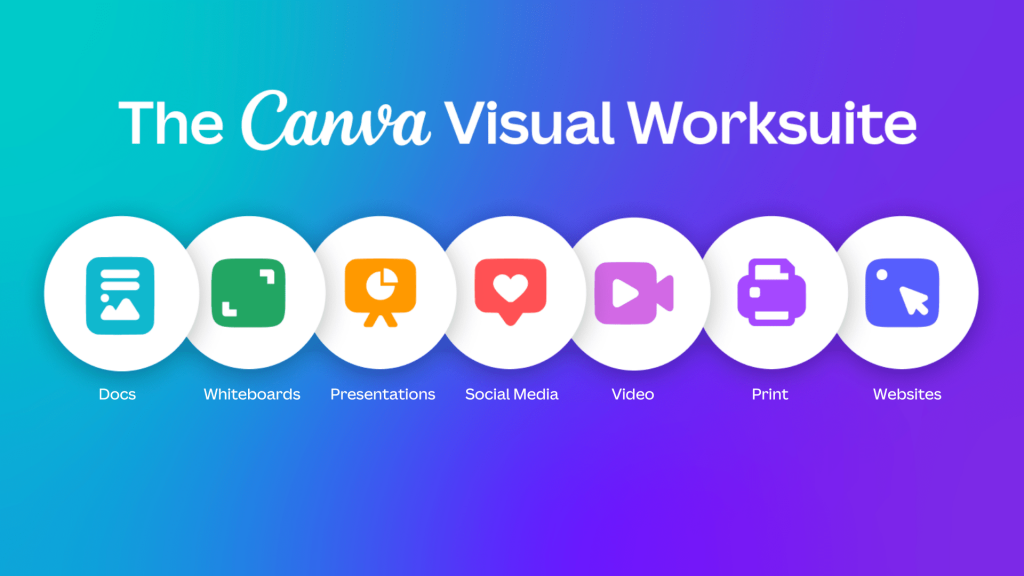
Credit: Canva
Canva is scaling up its offerings as it evolves from an online graphic design tool to a developer of workspace apps. In its recently concluded Create Canva event, the company announced that it’s launching a series of new products for its new Visual Worksuite. The range of offerings includes Canva Docs, Canva Whiteboards, Canva Presentations, Canva Video, Canva Website, and a host of new features. The company’s acquisition of data visualization firm Flourish helped in the development of additional functionalities.
Prior to releasing the software suite, Canva discovered that 85% of Fortune 500 companies leverage its tools, and 4.4 million users subscribed to Canva for Teams in 2021. With this, the company thought it best to expand its product line to best serve their needs, given today’s hybrid and remote work arrangements.
Docs and Whiteboards
Canva Docs comes as a flexible worksheet for creating visual documents. Providing text and visuals, the functionality enables users to compose, edit, and affix designs from its library of over 100 million videos, images, GIFs, and illustrations. The platform also offers new design elements like banners and whiteboards that users can embed in documents.
Like Google Docs, teams can collaborate on Canva Docs. Users can work concurrently and leave comments, updates, and instructions on the documents. Managers can also adjust user access, view insights, and monitor edits and interactions. In addition, Canva developed a new product called Docs to Decks that turns documents into presentations with one click.
Canva recognized that before documents are created, planning and brainstorming are required. And so it developed Canva Whiteboards for this purpose. The platform affords teams real-time collaboration features like spaces for brainstorming, a diagram creator, flowcharting tools, movable comment windows, and a large repository of designs.
Websites, Videos, and Presentations
Canva Websites grants intuitive tools to software developers for the quick and easy creation of websites. The platform offers hundreds of templates, on top of design elements that can be applied to videos, social media, and even shirts. It also gives users the option to publish on their own domain, obtain a free one, or purchase a domain from Canva.
Meanwhile, creators and video editors can craft engaging content using Canva Video’s inventive tools. These include a background remover, a range of animations, and animation controls. The platform can also turn designs into videos.
For decks and other presented media, Canva Presentation grants users a wide range of transitions, transition controls, and effects. Additionally, presentations can be edited as videos. This gives users the luxury to add audio tracks, visualize data, and insert animation. Canva even developed a remote control functionality that enables presenters to use a virtual clicker to toggle or navigate slides.
Aside from these, the company also enhanced Canva for Teams and built new solutions like Canva for Education, Canva Print, and a Canva Creators program.
Complementary, Not Competition
Canva asserts that even though many of its new products and features coincide with those of Google Workspace and Microsoft 365, it is not competing with other workspace app providers. Instead, the graphic design software company maintains that its suite is visual-oriented and targets different sets of needs. As such, the products and features are deemed complementary to traditional workspace apps since they furnish solutions that the latter lacks.
This appears to be a good move for Canva as it sets a new standard upon which visual documents are created. And it begins by becoming more than just a graphic design platform.






















Leave a comment!